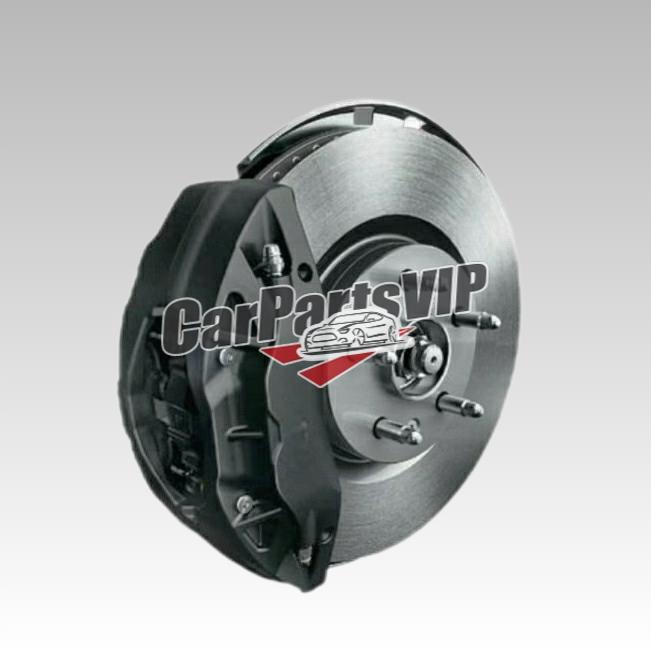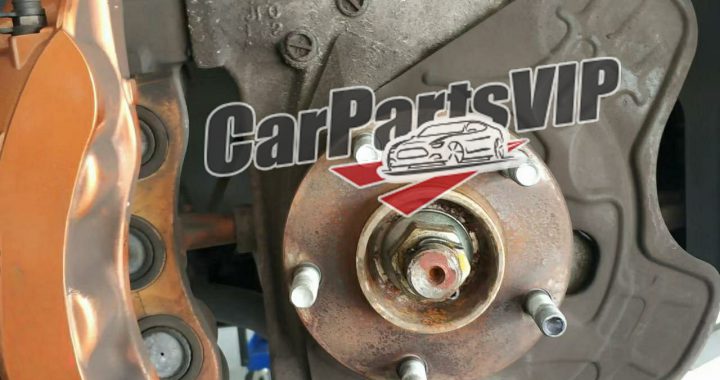The disc brake system is controlled by hydraulic pressure. Its working principle is to convert mechanical power into liquid pressure, and then the hydraulic pressure creates a huge friction force to slow down the wheel. The friction force is converted into heat energy, which is finally dissipated into the air. At present, hydraulic disc brake systems are widely used in family cars.
What are the components and functions of a disc brake system?
A typical disc brake system consists of the following components: wheel hub assembly, brake disc, brake caliper, wheel, and wheel nut. The wheel hub assembly is connected to the chassis of the car and also serves to fix the brake disc and other components. There is a bearing in the wheel hub assembly, which can control the wheel to make it rotate smoothly. The brake disc is an important component. It consists of two metal discs, one of which is equipped with a heat dissipation system. Because when braking, the friction between the brake pad and it will generate huge friction, and the huge friction will generate high temperature, especially on a long downhill. If the downhill speed is not controlled, the brake disc is easy to burn red. The heat dissipation system can accelerate air circulation and play a role in cooling and exhaust. The brake caliper is the main braking component. It can squeeze the brake pad through pressure so that the brake pad can stop the brake disc. It generally consists of a hydraulic piston, a bracket and a brake pad component. When we step on the pedal, the brake oil flows into the hydraulic piston in the brake caliper through the brake pipe under the pressure of the hydraulic brake system. The piston is squeezed out, and when the brake pedal is released, the piston returns to its original position. There is a sealing ring on the outside of the piston, which can prevent dust and dirt and protect the piston. Let’s look at the bracket component. It is generally installed on the car wheel hub to fix the brake pad and the caliper body. The piston assembly can be moved after the sliding pin is inserted. The brake pad is composed of four parts. The gasket reduces vibration and noise. The back plate is the rigid basis of the friction material. The interlayer between the back plate and the friction material plays a bonding role, which is responsible for bonding the friction material and the back plate together, and can also play a role in heat insulation. Finally, there is the friction material made of various compounds. It must have the characteristics of wear resistance, heat resistance, high strength and long life. The two brake pads are installed on the bracket and fixed by spring cuts. The brake pads are used very frequently and need to be replaced in time after wear, otherwise it will affect the braking performance.
How does a disc brake system work?
The working principle of the disc brake system: When the driver steps on the brake pedal, the mechanical force is converted into liquid pressure. The hydraulic pressure forces the brake oil to enter the piston assembly. The piston is pushed out to press the inner brake pad against the brake disc. Under the influence of friction, the brake disc begins to slow down. Since the inner brake pad can no longer move, no further pressure can be applied. When the hydraulic system continues to increase pressure, it will force the brake caliper body to move backward along the bearing. At this time, the outer brake pad begins to work. Under the joint action of the brake pads on both sides, the brake disc is stopped and the wheel stops rotating. When the brake pedal is released, the pressure is released and the piston returns to its original position.
How often do brake pads need to be replaced?
Brake pads generally need to be replaced after 3-5 km for front brake pads and 6-8 km for rear brake pads, but each car owner has different braking habits, so it depends on the actual wear and tear. Generally, the thickness of a new brake pad is about 1-1.5 cm. As the number of times increases, the thickness of the brake pad gradually becomes thinner, and the limit of use is 3 mm. If the thickness of the brake pad is only about 1/3 of the original thickness (about 0.5 cm), the brake pad needs to be replaced. When stepping on the brake, it is obvious that the brake is weak and soft. It is necessary to step on the brake deeply to achieve the previous braking effect. At this time, the braking distance becomes longer, which seriously affects driving safety and requires the replacement of brake pads.


